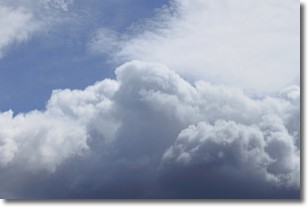Weather Alert in Florida
Flood Watch issued June 4 at 2:35AM EDT until June 4 at 5:00PM EDT by NWS Miami FL
AREAS AFFECTED: Metro Broward County; Metropolitan Miami Dade; Coastal Broward County; Coastal Miami Dade County
DESCRIPTION: An upper low and associated surface wave will begin moving north today. This will bring a gradual end to the rainy period we've had across south Florida over the past few days. Guidance is having a difficult time resolving the evolution of storms in this tropical environment without a coherent surface focus. However, it is correctly noting the threat for banding features and heavy rainfall. While there is extreme uncertainty whether heavy rain will impact many land areas today, the environment is favorable for heavy rain and localized flooding should a banding feature set up over land. The most probable areas for this to happen, and cause a flooding issue, would be the metros of Miami-Dade and Broward counties. Thus, the flood watch will continue through this afternoon for those locations. * WHAT...Flooding caused by excessive rainfall continues to be possible. * WHERE...A portion of southeast Florida, including the following areas, Coastal Broward County, Coastal Miami Dade County, Metro Broward County and Metropolitan Miami Dade. * WHEN...Through this afternoon. * IMPACTS...Flooding may occur in poor drainage and urban areas. * ADDITIONAL DETAILS... - While scattered storms capable of producing a quick 1 to 2 inches will be most common today, there is the potential for a band of storms to impact the same location with heavy rain multiple times. Should this occur, a quick 4 to 6 inches of rainfall is not out of the question. - http://www.weather.gov/safety/flood
INSTRUCTION: You should monitor later forecasts and be alert for possible Flood Warnings. Those living in areas prone to flooding should be prepared to take action should flooding develop.
Want more detail? Get the Complete 7 Day and Night Detailed Forecast!
Current U.S. National Radar--Current
The Current National Weather Radar is shown below with a UTC Time (subtract 5 hours from UTC to get Eastern Time).

National Weather Forecast--Current
The Current National Weather Forecast and National Weather Map are shown below.

National Weather Forecast for Tomorrow
Tomorrow National Weather Forecast and Tomorrow National Weather Map are show below.

North America Water Vapor (Moisture)
This map shows recent moisture content over North America. Bright and colored areas show high moisture (ie, clouds); brown indicates very little moisture present; black indicates no moisture.

Weather Topic: What are Nimbostratus Clouds?
Home - Education - Cloud Types - Nimbostratus Clouds
 Next Topic: Precipitation
Next Topic: Precipitation
A nimbostratus cloud is similar to a stratus cloud in its formless,
smooth appearance. However, a nimbostratus cloud is darker than a stratus cloud,
because it is thicker.
Unlike a stratus cloud, a nimbostratus cloud typically brings with it the threat
of moderate to heavy precipitation. In some cases, the precipitation may evaporate
before reaching the ground, a phenomenon known as virga.
Next Topic: Precipitation
Weather Topic: What is Rain?
Home - Education - Precipitation - Rain
 Next Topic: Shelf Clouds
Next Topic: Shelf Clouds
Precipitation in the form of water droplets is called rain.
Rain generally has a tendency to fall with less intensity over a greater period
of time, and when rainfall is more severe it is usually less sustained.
Rain is the most common form of precipitation and happens with greater frequency
depending on the season and regional influences. Cities have been shown to have
an observable effect on rainfall, due to an effect called the urban heat island.
Compared to upwind, monthly rainfall between twenty and forty miles downwind of
cities is 30% greater.
Next Topic: Shelf Clouds
Current conditions powered by WeatherAPI.com




